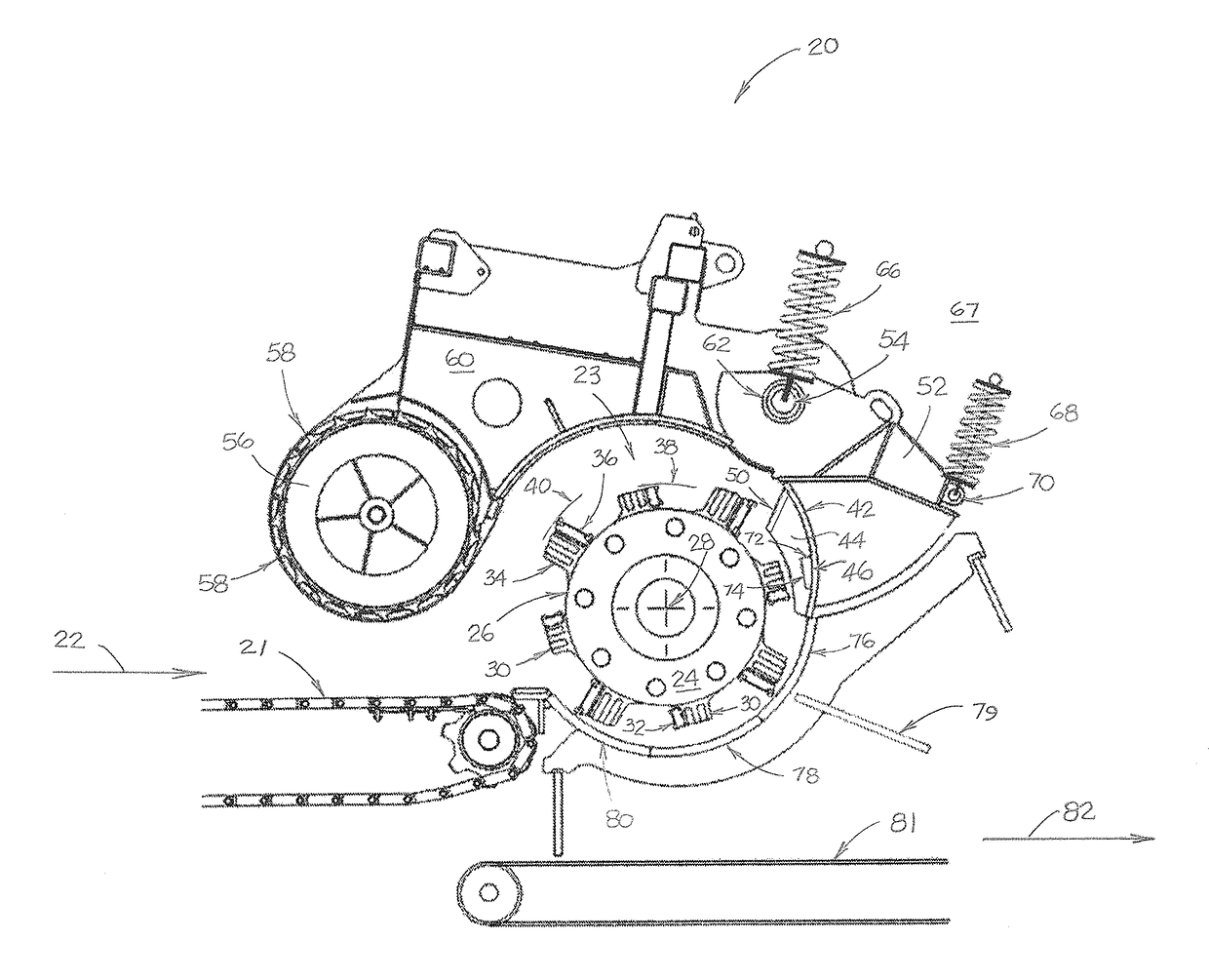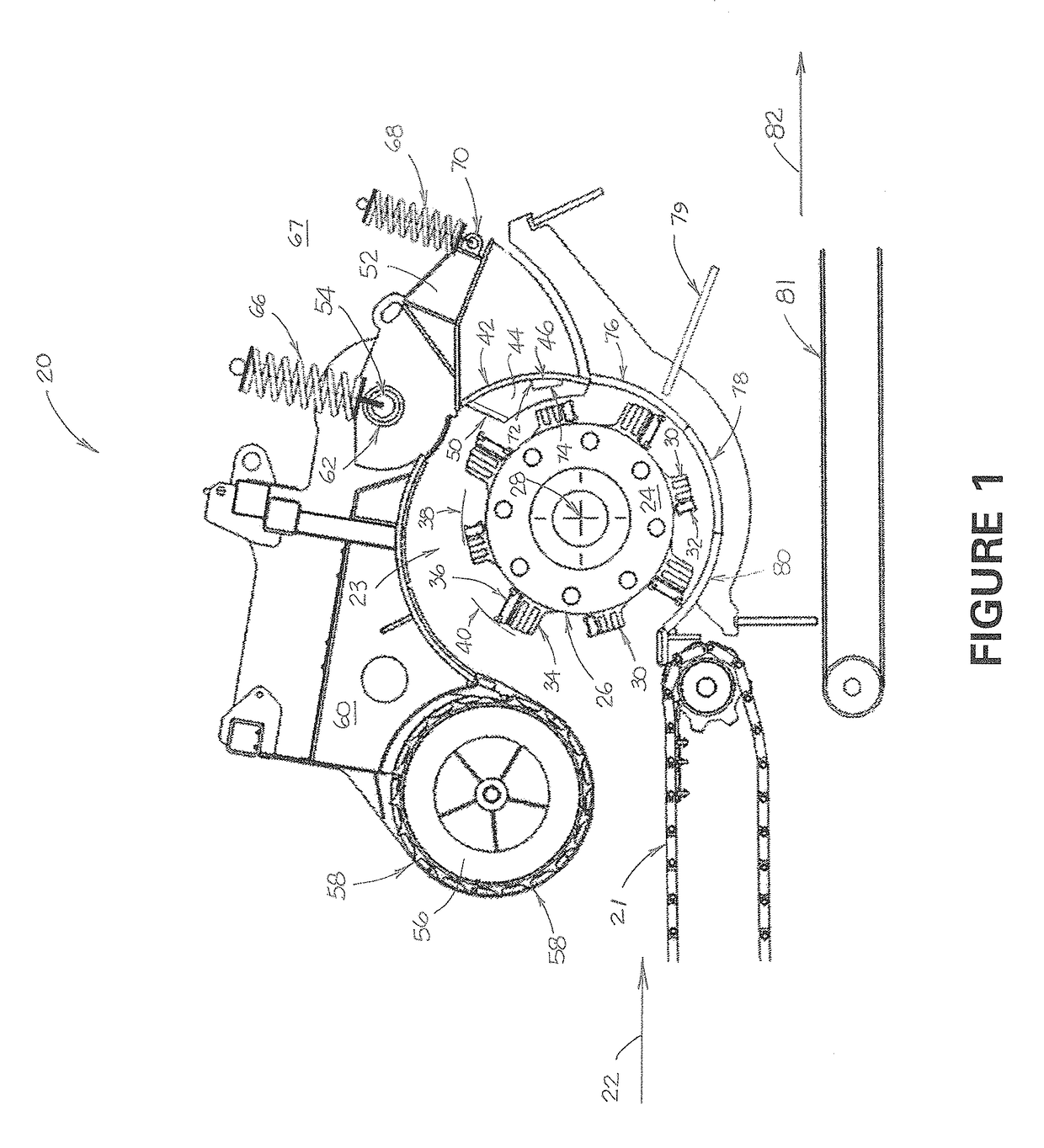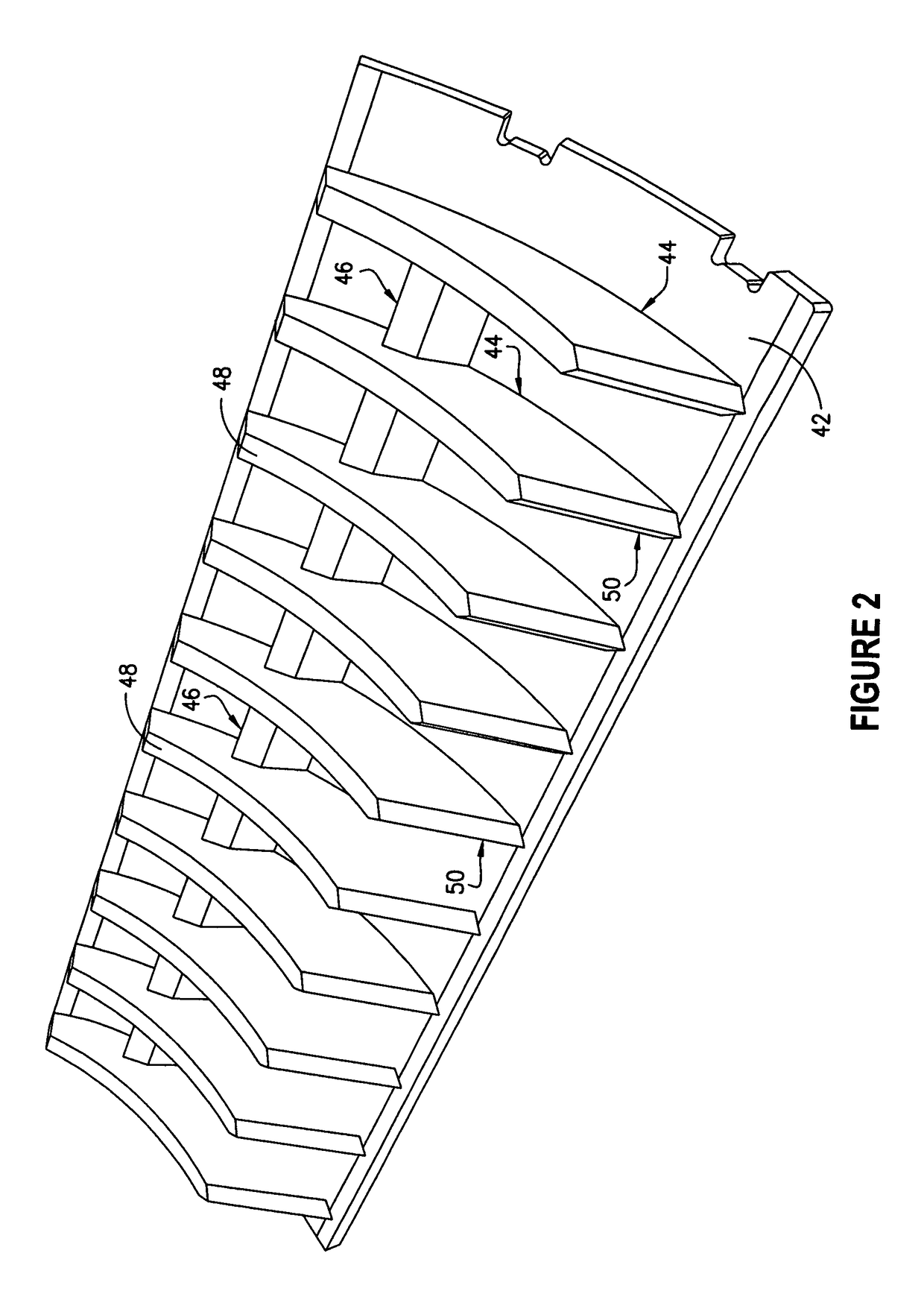Material reducing device
a technology of reducing device and material, which is applied in the direction of grain treatment, etc., can solve the problems of prior art machines not being able to produce uniformly shaped smaller pieces, known material-reducing machines may not be suitable for use in reducing all types of materials, and may not efficiently reduce fibrous materials. , to achieve the effect of reducing speed, reducing cost and improving efficiency
- Summary
- Abstract
- Description
- Claims
- Application Information
AI Technical Summary
Benefits of technology
Problems solved by technology
Method used
Image
Examples
first embodiment
[0051]the invention is illustrated in FIG. 1. As shown therein, material reducing machine 20 includes a generally horizontal material input device such as input conveyor 21. Conveyor 21 is adapted to move material to be reduced in the direction indicated by arrow 22 toward rotor assembly 23. In other embodiments of the invention (not shown in the drawings), the material input device may comprise a chute, and it may be placed with respect to the rotor assembly other than a generally horizontal orientation.
[0052]Rotor assembly 23 comprises a plurality of generally circular rotor plates, one of which, plate 24, is shown in FIG. 1. Because of its generally circular rotor plates, rotor assembly has a generally cylindrical periphery 26. Rotor assembly 23 is adapted to rotate in a clockwise rotational direction, as shown in FIG. 1, about its axis of rotation 28. Rotor assembly 23 comprises a plurality of short cutting tools comprising short tool holders 30 with cutting bits 32 mounted ther...
second embodiment
[0054]FIGS. 3 and 4 illustrate the breaker assembly. As shown therein, the breaker assembly includes curved back plate 42 with a plurality of shear blocks 144 and breaker blocks 46 arranged across the width of the machine on the side of back plate 42 that would be adjacent to rotor assembly 23 if this breaker assembly were substituted for the one shown in FIGS. 1 and 2. In that event, shear blocks 144 would extend from back plate 42 towards the rotor assembly a greater distance than breaker blocks 46, and the cutting tools on the rotor assembly and the shear blocks and breaker blocks on the back plate would be arranged so that the long cutting tools would be aligned with breaker blocks 46 and the short cutting tools would be aligned with shear blocks 144. In this embodiment of the invention, the short cutting tools would pass over the curved outer surfaces 148 of shear blocks 144, and the long cutting tools would pass between adjacent shear blocks 144. The leading edges 150 of shear...
third embodiment
[0055]the breaker assembly is illustrated in FIG. 5. As shown therein, the breaker assembly includes curved back plate 42 with a plurality of shear blocks 244 and breaker blocks 46 arranged across the width of the machine on the side of back plate 42 that would be adjacent to rotor assembly 23 if this breaker assembly were substituted for the one shown in FIGS. 1 and 2. In that event, shear blocks 244 would extend from back plate 42 towards the rotor a greater distance than breaker blocks 46, and the cutting tools on the rotor and the shear blocks and breaker blocks on the back plate would be arranged so that the long cutting tools would be aligned with breaker blocks 46 and the short cutting tools would be aligned with shear blocks 244. In this embodiment of the invention, the short cutting tools would pass over the curved outer surfaces 248 of shear blocks 244, which surfaces include a plurality of notches 249. The long cutting tools would pass between adjacent shear blocks 244. A...
PUM
 Login to View More
Login to View More Abstract
Description
Claims
Application Information
 Login to View More
Login to View More - R&D
- Intellectual Property
- Life Sciences
- Materials
- Tech Scout
- Unparalleled Data Quality
- Higher Quality Content
- 60% Fewer Hallucinations
Browse by: Latest US Patents, China's latest patents, Technical Efficacy Thesaurus, Application Domain, Technology Topic, Popular Technical Reports.
© 2025 PatSnap. All rights reserved.Legal|Privacy policy|Modern Slavery Act Transparency Statement|Sitemap|About US| Contact US: help@patsnap.com



